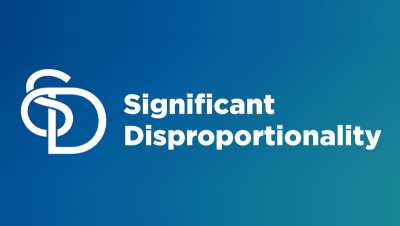The Success Gaps Toolkit presents a process for using data and the Success Gap Rubric to identify root causes of outcome gaps or inequities between groups of children in districts or schools. These success gaps occur when the education system is not meeting the needs of all groups of children and outcomes for some groups are different than the outcomes for most groups. The toolkit, with its process and materials, provides a manageable and defined way for districts or schools to identify success gaps that are present and their root causes and then make a plan for addressing the gaps. The success gaps may be any outcome differences between groups of students such as the graduation rate of students who are English learners compared to the rate of all other children, the out-of-school suspension rate of children who are Black compared to the rate of all other children, the identification of children who are Hispanic as children with specific learning disabilities compared to the identification of all other children, and other gaps. The toolkit materials and resources include
- Defined process with facilitator tips and directions to take the success gaps teams through the success gaps process
- Videos that explain concepts or important points of the success gaps process
- Customizable agendas, handouts, and presentation shells for each meeting
- Other support materials such as improvement planning forms, meeting evaluation forms, reading materials to use with teams, and others.
Districts and schools can use the Success Gaps Toolkit materials if they have a gap in performance or achievement to address, whether identified through the state's accountability system as a district or school in need of improvement or as low performing or through self-evaluation. Districts or schools can use the toolkit to take a closer look at their educational system to prevent success gaps and ensure an equitable education for all students. A state can use the toolkit with a district to identify success gaps and their causes within the district or its schools. Some states will use the materials as part of their work with districts that are underperforming academically, have school climate challenges, or have identified disproportionality.
Resource Files & Links
Companion Resources
These are resources that supplement the resource above.
Format: Guides and Briefs
Success Gaps Rubric: Addressing Equity, Inclusion, and OpportunityThis rubric allows a team of users from a district or school to systematically examine the root causes of success gaps among groups of students by focusing on equity, inclusion, and opportunity. The recently updated rubric now includes considerations for children as young as preschool age. A complementary white paper provided the research-based background that supported development of the rubric.
Related Content
Format: Applications and Spreadsheets
Data Sources for Calculating Significant DisproportionalityData Sources for Calculating Significant Disproportionality provides a summary of the data needed to calculate significant disproportionality for identification, placement, and discipline. For each category of analysis, this resource provides a description of the data needed to calculate the risk numerator and risk denominator, and notes the relevant EDFacts file specifications, including which subtotals or category sets, as appropriate.
Format: Quick Reference
Significant Disproportionality ResourcesThe Equity in IDEA regulations require states to determine annually if local education agencies (LEAs) are identified with significant disproportionality. The regulations outline specific requirements related to methods for identifying LEAs and activities the LEAs must complete after they are identified. These significant disproportionality resources can assist states with implementing these requirements and supporting LEAs through the process of meeting the requirements.




